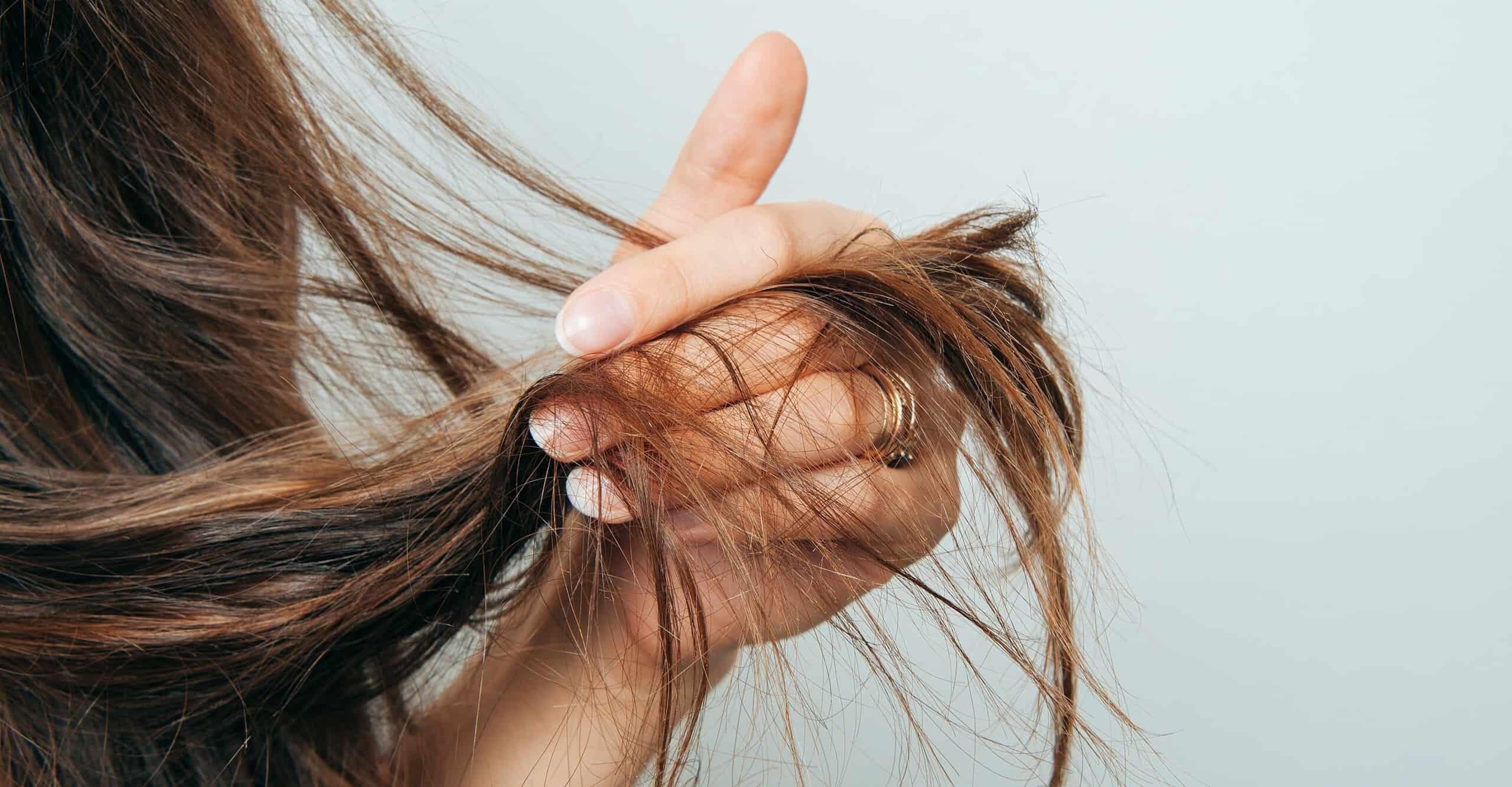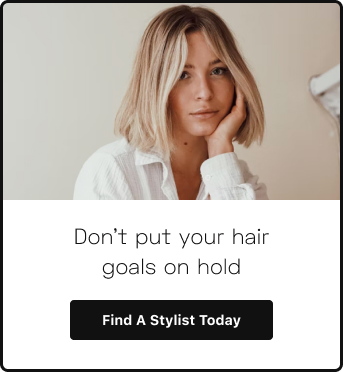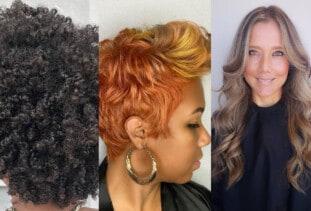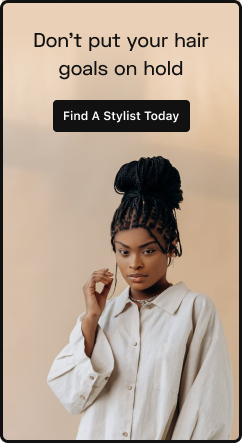Have you ever watched a woman walk by or scrolled through her Instagram feed and envied her long and voluminous hair? Achieving beautiful hair often involves patience and a bit of luck from genetics. But thankfully, hair extensions are one of the best beauty tricks out there. You can use extensions when you want to switch up your look or get thicker, longer locks.
If you have thin hair, you may be eager to fill it out, but hair extensions have a reputation for causing damage if worn incorrectly. Thankfully, there are hair extensions for thin hair that can increase your confidence and help you achieve your desired look. Learning how different hair extensions work can help you make the best choice for your hair.
The best extensions for thin hair will depend on the state of your hair and what style you’re trying to achieve. You should also consider your budget and the cost of different extensions. In the guide below, we’ll discuss the different types of hair extensions and how to use them.
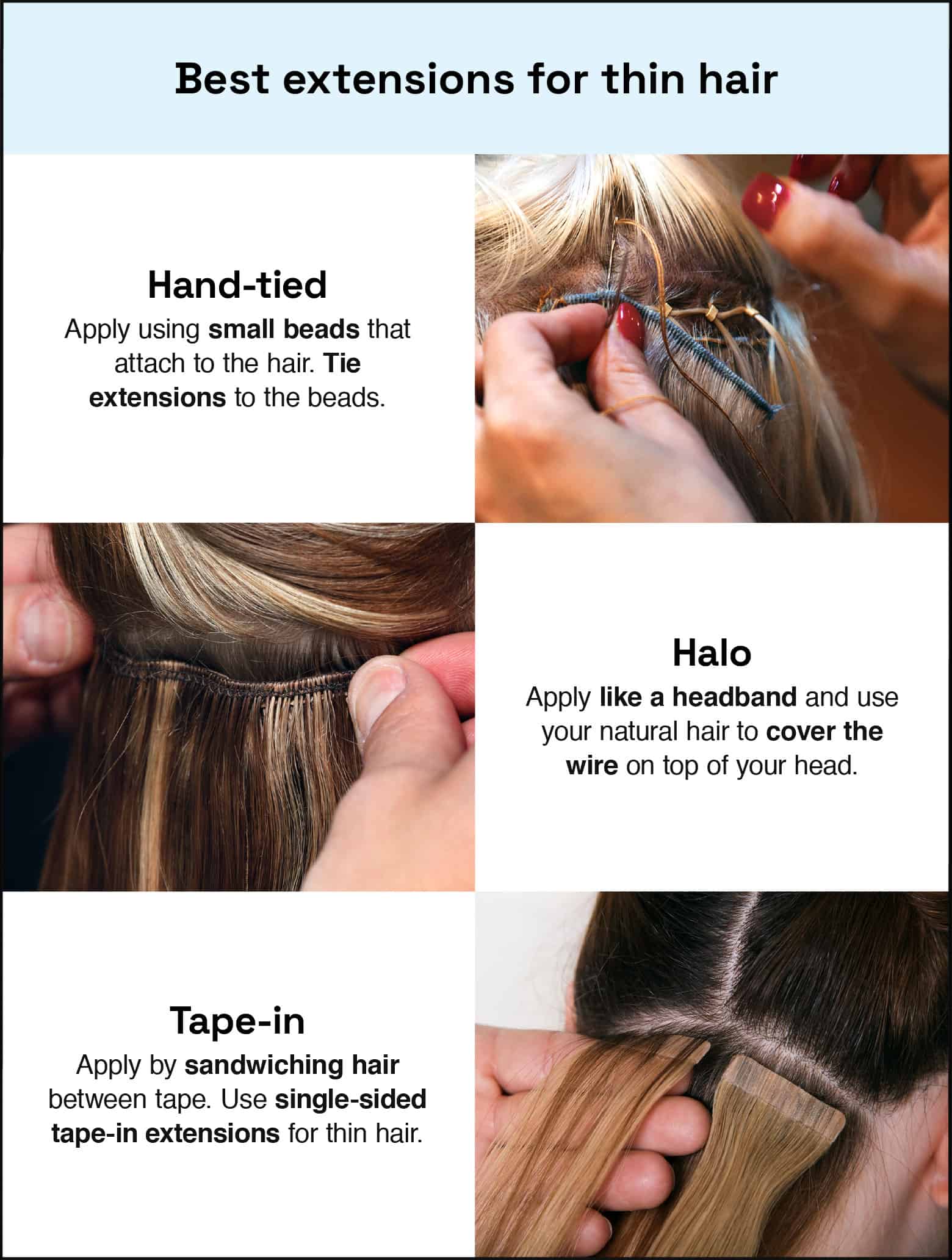
Best Hair Extensions For Thin Hair
There are a variety of hair extensions and some are more damaging than others. Because thin hair is already fragile, it’s important to choose extensions that won’t cause additional stress to the hair shaft or follicle. Hand-tied, halo, and tape-in options are some of the best hair extensions for thin hair.
Hand-Tied Hair Extensions
With hand-tied hair extensions, a stylist slides small silicone beads onto rows of hair and then hand-ties wefts of hair extensions through the bead with cotton or nylon thread. Hand-tied hair extensions are less damaging than other popular styles, like clip-in and sew-in hair extensions.
This method puts less tension on your natural hair and the extensions also look more natural. If you have thin hair, you can use hand-tied extensions to achieve length and volume. Hand-tied hair extensions work well with straight or wavy hair because they can lay flat against the scalp.
Halo Hair Extensions
Halo hair extensions are some of the easiest to put in for thin hair. You can put in halo hair extensions without a hairstylist because the installation process is quick and simple.
With this option, you’ll choose your hair extension color, style, and length, and the extension comes as one piece attached to a clear wire. You’ll then put on the hair extension like a headband. You can hide the wire on top of your head by covering it with your natural hair. In minutes, your thin hair will look long and full without damaging your hair.
Tape-In Hair Extensions
Tape-in hair extensions are another great option for thin hair because each weft is lightweight. Tape-in extensions are typically applied by sandwiching two extensions on top of a piece of hair. If you have thin hair, it may be wise to use single-sided tape-in extensions, which will give your hair a lightweight feel. You can achieve many styles for thin hair with these extensions.
Another benefit of tape-in extensions is that they don’t require any heat or product to apply. They’re also great for people with short hair who want to easily blend their extensions. While tape-ins can work on thin hair, using adhesives long-term may cause excessive stress to individual strands. We recommend asking a stylist whether consistently using tape-ins is safe for your hair type.
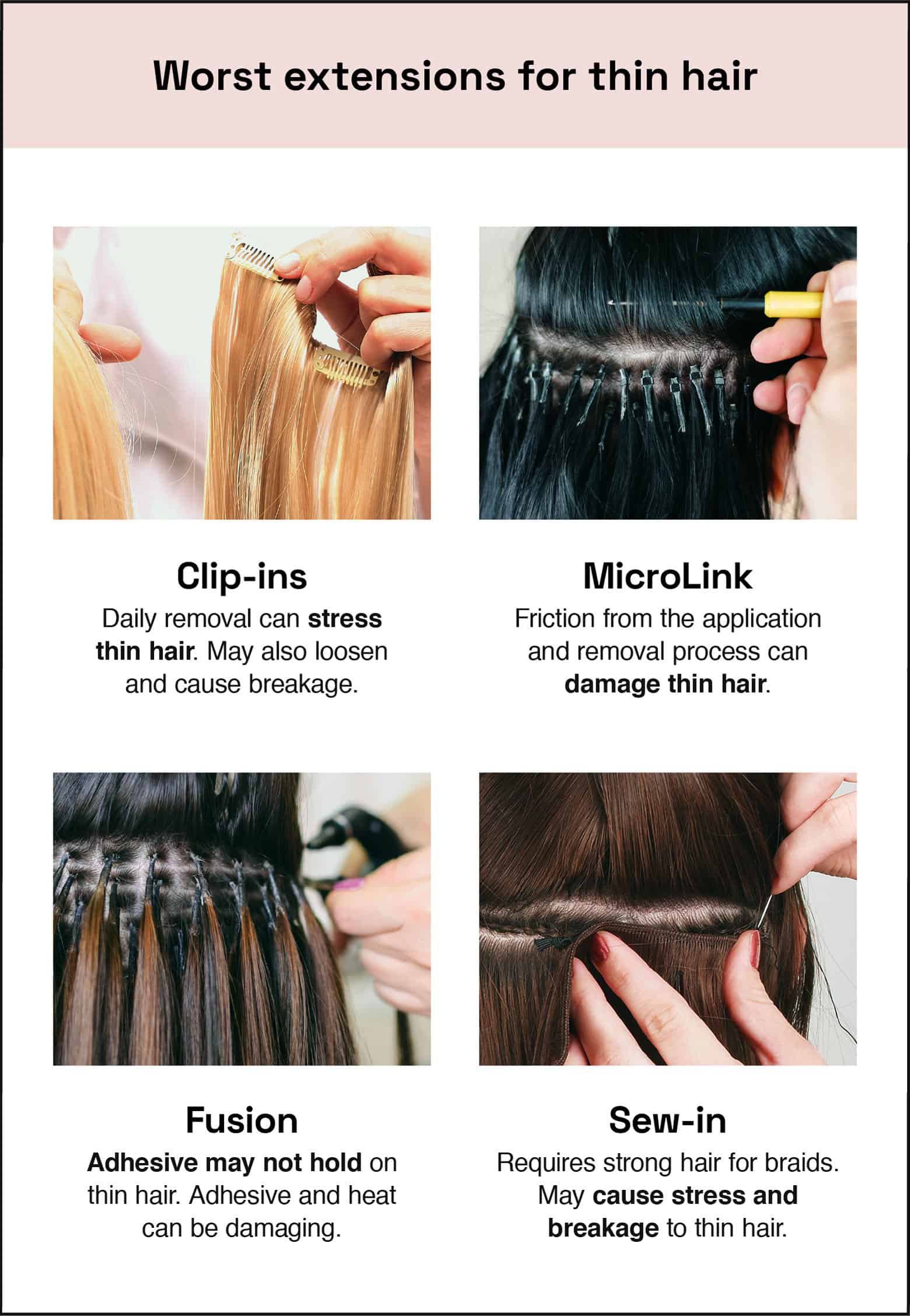
Hair Extensions To Think Twice About
There are some hair extensions that you should think twice about if you have thin hair. These hair extensions can put tension on the hair and may be too heavy if your hair is already fragile and prone to breakage. These hair extensions can, however, work well for those with thicker, curly hair.
Clip-In Hair Extensions
Clip-ins are temporary hair extensions that you can clip in and out of your hair. While clip-ins can be convenient and cost-effective, they aren’t ideal for thin hair. Taking them in and out every day can stress the hair. Like traditional hair clips, these hair extensions may also loosen unexpectedly and cause hair breakage.
Microlink Hair Extensions
Microlink hair extensions are small hair extensions that combine strands of natural hair with extension strands using small metal tubes. While this is a desirable method for some because it’s the most undetectable hair extension option, it can cause stress to thin hair because the application and removal process involves a lot of pulling and tugging. These extensions also add a lot of weight to the hair.
Fusion Hair Extensions
Fusion hair extensions, sometimes called pre-bonded or bonding hair extensions, fuse hair extensions to individual natural hair strands with adhesive. This hair extension process is not a great option for thin hair because it exposes the hair to adhesives and heat during application. The adhesive also may not hold well on thinner strands of hair.
Sew-In Hair Extensions
Sew-in hair extensions, also known as weaves, involve braiding in hair extensions at the scalp. Although a popular form of hair extensions, this option may not work well for people with thin hair because you’ll need a strong foundation of hair to use for braids. This method for hair extensions can also cause stress and breakage.
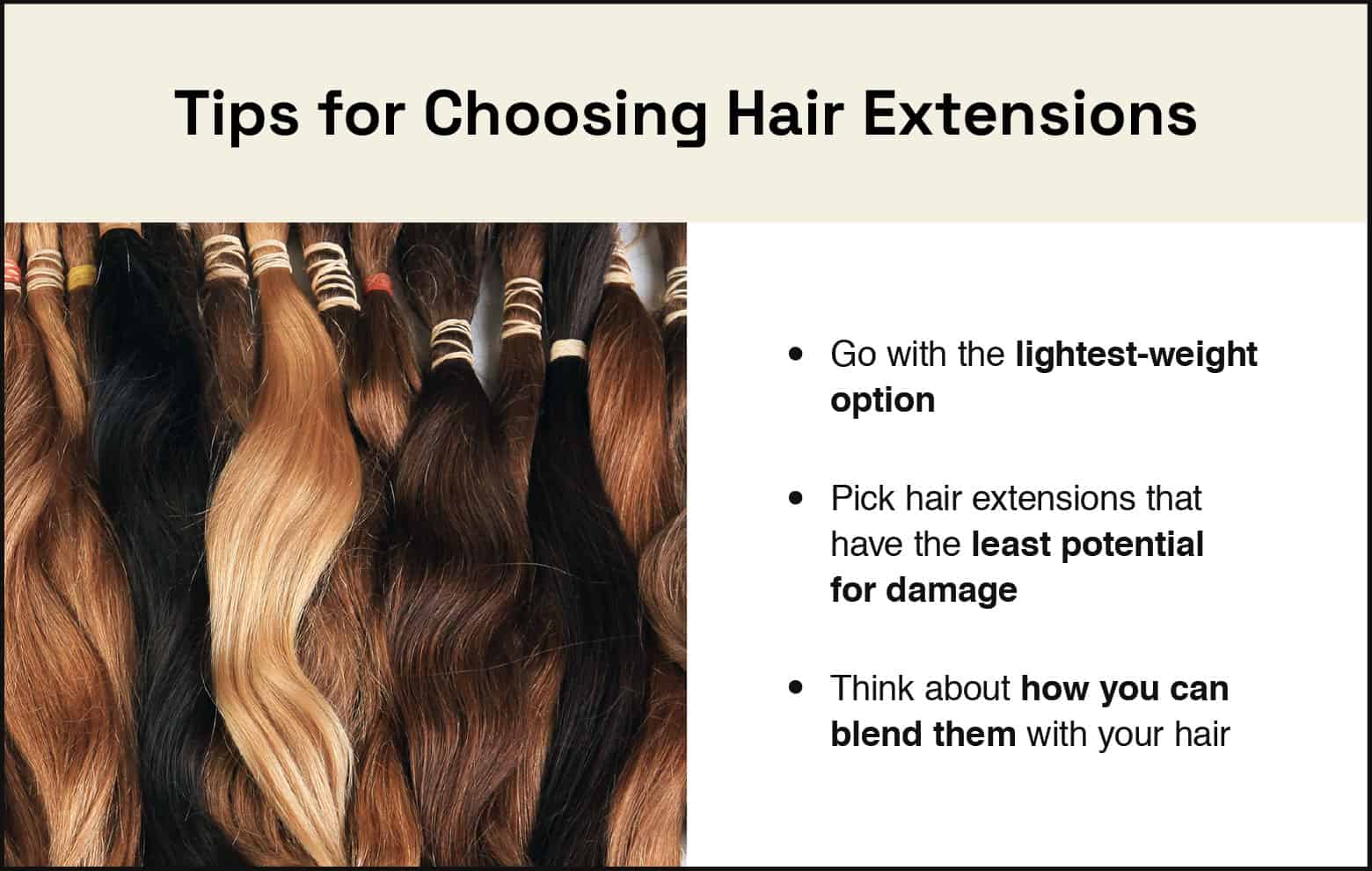
What To Consider When Picking Hair Extensions
Choosing the best hair extensions comes down to what works best with your hair type. Every type of hair extension has its benefits and its drawbacks. For example, some people may love clip-ins because they can be removed each night, while others may love hand-tied extensions for their lasting, natural look.
If your priority is to keep your thin hair healthy while wearing hair extensions, then some things to consider are the amount of weight and tension added to your hair and how much stress your hair can take. For example, strand-by-strand extensions may seem better since they’re less heavy on your hair, but the application method may cause more tension than your hair can take.
Here are some tips for choosing the best hair extensions with your hair health in mind:
- Go with the lightest option. Having less weight in your hair extensions means the extensions are less likely to slip out and add tension to your hair.
- Pick hair extensions that have the least potential for causing damage. Damage from hair extensions often comes from the application and removal process. Find hair extensions that involve gentle application and removal so your hair stays damage-free.
- Think about how you can blend them with your hair. If you have thin hair, you should think about how you can hide extensions with your natural hair. For example, human hair extensions blend more easily with natural hair than synthetic options. A hairstylist will have tips on how to blend hair extensions with your hair type.
Booking a consultation with a Pro is one of the best ways to ensure you’re choosing the best hair extensions for your custom hair type. A Pro will take a look at your hair, learn more about your hair health, and give you personalized advice.
How Do You Hide Extensions With Thin Hair?
Most of the work of blending and hiding your extensions should happen when putting them in. To blend your hair extensions with your thin hair, start by choosing extensions that resemble your natural hair color. Your stylist can then strategically place the extensions in a way that blends with your hair texture. Once your stylist has placed your hair extensions, they can cut and color your hair near the ends to make sure everything looks natural.
Will Extensions Damage Fine Hair?
Hair extensions can damage fine hair if they’re too heavy. They can also put tension on the hair and may require a lot of heat or product to apply. We’ve discussed the types of hair extensions that cause less stress to thin or fine hair, and sticking to these types can help you avoid breakage.
Hair extensions can be safe for thin hair as long as you pick a style that works best with your hair texture and type. The best way to ensure you’re choosing the right extensions and placing them correctly is to set up a consultation with a Pro. They can give you personalized advice on your hair before you jump into your next set of extensions.
If you’re ready to try hair extensions on your thin hair, get in touch with a Pro so you can get all of your questions answered, receive expert help when picking out your hair extensions, and feel confident in your decision.
